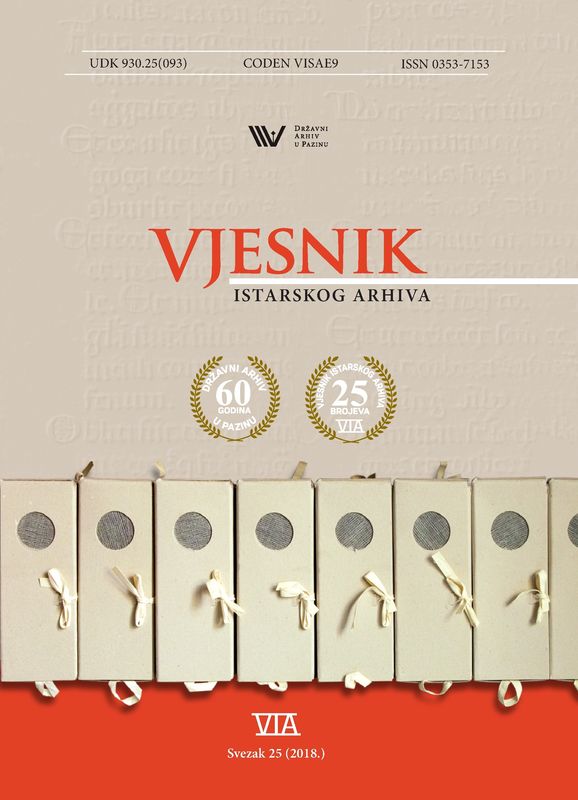Two island of public goods Nationalization of property in Istria on the examples of Sveti Andrija Island near Rovinj and the Brijuni Islands (1945-1947/1948)
DOI:
https://doi.org/10.31726/via.25.7Keywords:
Istria, Sveti Andrija Island, Rovinj, Brijuni Islands, Hütterott, District Administration of Public GoodsAbstract
The paper examines the nationalisation of private property in Istria by the new government on the examples of Sveti Andrija Island near Rovinj and the Brijuni Islands, in a specific situation which came upon Istria at the end of the Second World War. By following these two cases, out of a total of 412 proceedings conducted between May 1945 and 28th August 1946 on the territory of the District National Liberation Committee (ONOO) or the District National Committee (ONO) for Istria, the paper tries to reveal the contours of models applied to other nationalisation processes, the manner of functioning of the local national administration at various levels (district, town), its relations with state authorities, Department for People’s Protection (OZNA) and the army, but also the everyday life of people who have been involved in the process of nationalisation in one way or another. Although it was envisaged that the leader of nationalisation would be the District Administration of Public Goods (OUND) for Istria, a confused situation in the field resulted in a complex and often chaotic situation in which the old antagonisms between town and periphery emerged again. The entire process, however complex, was made even more difficult by human greed, and also by the great penury, which ultimately led those, supposed to care for the property to use it themselves. The civilian authorities wanted to prevent any form of unruliness and appropriation of things without a legal basis, aware that this would reflect on the perception of the new government among the people and on its international reputation at a time when the fate of the Istrian belonging had not yet been fully resolved. However, the OUND for Istria and its branch offices with the District National Committees started functioning late and did not objectively have the power to establish authority on the ground. The processes on the Sveti Andrija Island are much easier to follow because it is an island, namely a group of islands owned by the Hütterott family in May 1945. The ownership structure of the Brijuni Islands was more complex. The former possession of the Kupelwieser family was taken over in the 1930s by the company Regia Azienda Isola Brioni owned by the Italian state. Arable land and pastures were leased. Apart from hotels and hotel amenities, there were several private villas on the Veli Brijun Island. Fortresses and other areas had been in the possession of the army since the time of the Austrian rule. Unlike Sveti Andrija Island, where only two tenant families lived, the Brijuni Islands had more than 250 permanent inhabitants immediately after World War II. Particularly interesting is the fact that the people in charge of the property on the Brijuni Islands and on Sveti Andrija Island (among them Branko Fučić in particular), had a longterm vision of the development of the Islands and care of cultural heritage. Instead, other models of usage took hold. The Brijuni Islands became the President’s residence, and Sveti Andrija a trade union resort. Visions from the post-war years became true on the Brijuni Islands in 1983 when the Islands became a national park, while the vision of Branko Fučić for Sveti Andrija is being reconsidered.
Downloads
Published
Issue
Section
License

This work is licensed under a Creative Commons Attribution-NonCommercial 4.0 International License.

